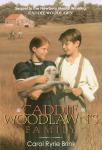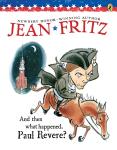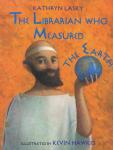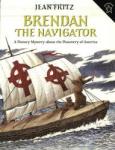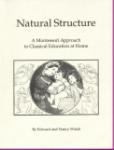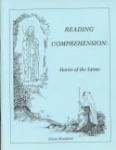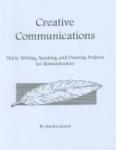Alicia Van Hecke
Caddie Woodlawn's Family
This is a delightful collection of additional stories about Caddie Woodlawn and her family (and one additional story as explained in the introduction that doesn't quite belong). These stories take place between 1863 and 1866 and so in some places overlap the original stories in Caddie Woodlawn which took place in 1864. Here each chapter stands alone as an interesting and true story and many are very touching and beautiful.
And Then What Happened, Paul Revere?
This is a humorous yet informative account of Paul Revere's famous ride to alert the countryside that "the Redcoats" were coming. The details are quite interesting and carefully researched (down to a few details that Paul Revere liked to include when telling the story to his own grandchildren). There are a few slightly annoying details in the illustrations, but I wouldn't consider them serious (e.g. a picture of a Boston scene that includes a picture of a pirate's head – not detailed enough to be gory, but a bit gross) .
Shh! We're Writing the Constitution
A surprisingly in-depth account of the characters involved in the writing of the United States' Constitution and many of the fascinating details of life at that time, the struggles involved in such a monumental task, and the somewhat humorous attitudes and actions of our Founding Fathers. Approximately 4th grade reading level, but could be read aloud to younger children (and would be informative for older ones as well).
The Librarian Who Measured the Earth
This is a fascinating story, told for children and fully illustrated (beautiful full color pictures with interesting and at times humorous details) of the Greek Scientists, Mathematician and Astronomer – Eratosthenes. (Don't worry – the author does help you to pronounce the name). Eratosthenes was born in the 3rd century B.C. in the country we now call Libya to Greek parents. There he was educated in the classical Greel tradition and developed a keen interest in the world around him. As a young man he was sent to Athens to study where he became known as a scholar and historian.
Brendan the Navigator
Natural Structure
Dr. and Mrs. Walsh who are Catholic homeschool parents of three children and Third Order Carmelites (and have many years of teaching experience between them) have outlined a Catholic homeschool curriculum using Maria Montessori's philosophies to guide the teaching methods and Dorothy Sayers' essay "The Lost Tools of Learning" to direct the content (subjects covered, materials used, etc.).
Reading Comprehension: Stories of the Saints, Volume 1
Ten Saint stories are told in an engaging manner for children (recommended for mid-grade schoolers): St. Maria Goretti, St. Maximillian Kolbe, St. Catherine Laboure, St. Bernadette Soubirous, Blessed Miguel Pro, St. Martin De Porres, St. John Bosco, St. Francesca Cabrini, St. Philomena, and Blessed Herman of Reichenau. Each story is approximately 6 - 8 pages long and is illustrated with pen and ink drawings.

